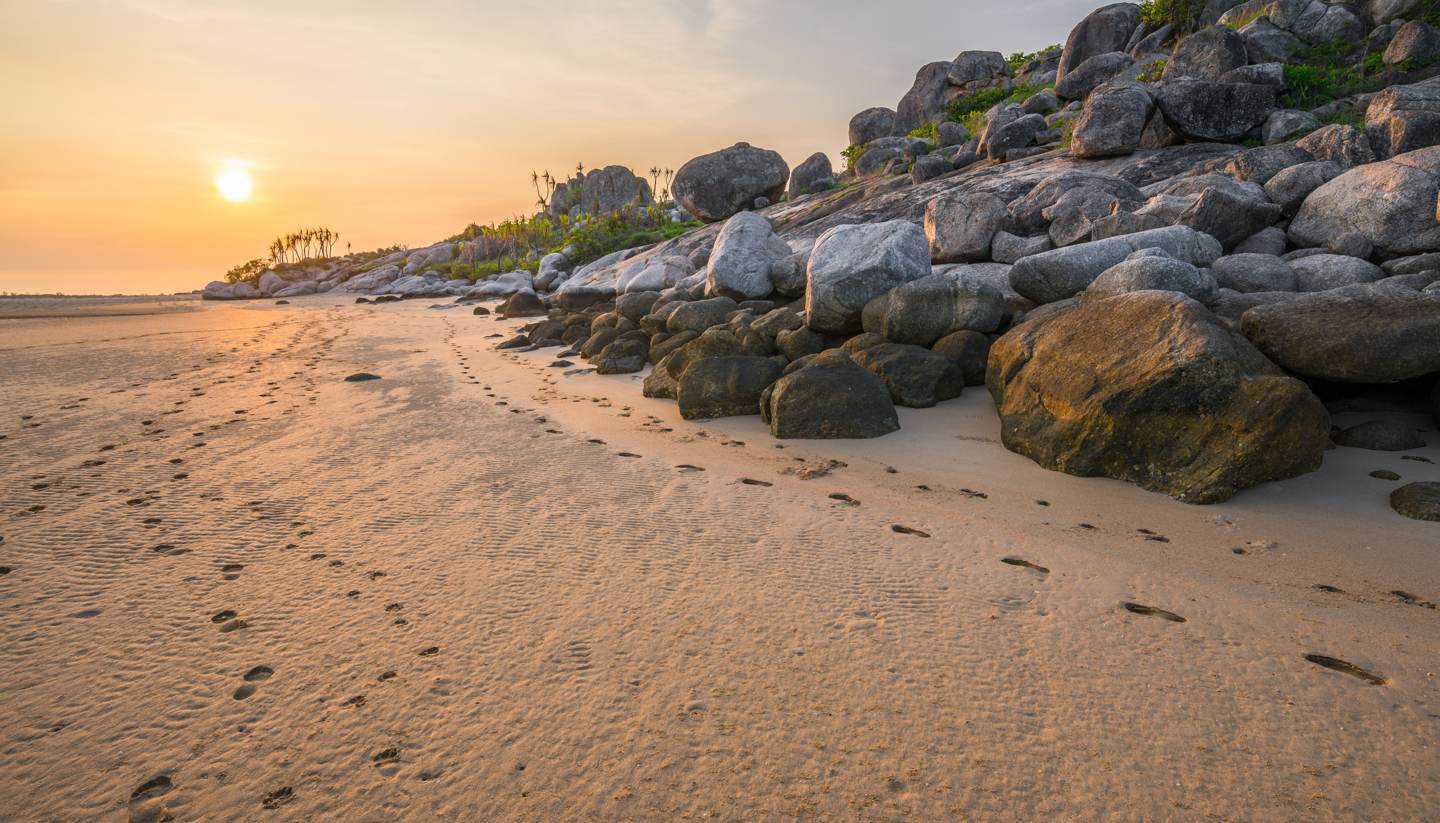Getting Around Australia
Air
Australians rely on aviation to get from place to place in the same way that inhabitants of smaller countries rely on trains and buses. The network of scheduled services extends to more than 150,000km (95,000 miles) and covers the whole continent. Major domestic routes operate between all capital cities. Aircraft can be chartered by pilots who pass a written examination on Australian air regulations and have their licences validated for private operations within Australia.
The major domestic airlines are Qantas/QantasLink (www.qantas.com), Jetstar (www.jetstar.com.au), Tiger Airways (www.tigerair.com.au), Rex (rex.com.au) and Virgin Australia (www.virginaustralia.com), which serve the major resorts and cities throughout Australia.
In addition, Airnorth (www.airnorth.com.au) operates throughout the Northern Territory and also flies to Broome in Western Australia; and several small airlines operate to the islands off Tasmania. Nearly all domestic airlines operate special deals at greatly reduced prices.
Air passes
The Qantas Walkabout Pass offers discounts on domestic flights when bought with an international ticket. Foreign travellers can also buy a Visit Australia & New Zealand Pass through the Oneworld alliance, which gives the option of booking as many internal flights (minimum two flights) as you like through any of their member's services.
Departure tax
None.
Road
It’s essential for drivers to be aware of the sheer extent of some of the distances involved – Sydney to Melbourne might not look like much on a map, but the route runs for a total of 1,041 km (650 miles). Sydney to Perth, meanwhile, is a whopping 3,869 km (2,418 miles).
Roads in more remote areas are often unsealed and only negotiable by terrain-equipped 4-wheel drive vehicles. Many see little or no traffic. If planning a journey on a road of this nature, make sure you have enough fuel, water and supplies to cope should anything go wrong. It is also advisable to let other people know about the route you are taking and what your estimated departure and arrival times are before you travel.
Side of the road
LeftRoad Quality
The roads between cities and towns are of a high standard. There are few multi-lane highways, but major arteries are generally sealed two-lane roads. Road signs are international.
Road Classification
M Routes (primary highways), A Routes (single carriageway interstates with less traffic volume than M Routes), B Routes (secondary highways), C Routes (roads linking smaller towns and villages) and D Routes (unsealed roads).
Car Hire
Major international and some local car hire companies are available at all major airports and big hotels to those over 21 years old who have held a licence for a year or more. Surcharges may apply to drivers under 25 years old.
Taxi
Taxis are generally easy to arrange in all towns and cities, and as a rule offer a safe, reasonably priced alternative to public transport.
Bike
Bike hire is widely available in towns and cities. It is perfectly possible to cycle between major centres in Australia, although the distance from A to B, and the often unforgiving heat, are factors that may deter some.
Coach
Greyhound Australia (1300 473 946, in Australia only; www.greyhound.com.au) operates services throughout the country.
Regulations
The minimum driving age is 16 to 18 years, depending on the state. The speed limit is 40-50kph (25-31mph) in built-up areas of cities and towns, unless otherwise signed and 80-110kph (50-68mph) on country roads and highways. Seat belts must be worn at all times and driving licences must be in the driver's possession when driving.
Breakdown services
There are various state automobile clubs which offer roadside assistance. They charge a membership fee, but are generally invaluable in emergencies. The overarching body is the Australian Automobile Association (www.aaa.asn.au) while state-specific bodies are the AANT (www.aant.com.au) for the Northern Territories, the NRMA (www.mynrma.com.au) for NSW and ACT, the RAC (www.rac.com.au) for Western Australia, the RACQ (www.racq.com.au) for Queensland, the RACT (www.ract.com.au) for Tasmania and the RACV (www.racv.com.au) for Victoria.
Documentation
An International Driving Permit is required by nationals of countries whose official language is not English. International, foreign or national driving permits are generally valid for three months. An International Driving Permit is only valid in conjunction with a valid national licence. Permits must be carried at all times while driving.
Urban travel
Comprehensive public transport systems are provided in all the main towns. The state capitals have suburban rail networks, those in Sydney and Melbourne being particularly extensive; trams run in Melbourne and, to a lesser degree, in Adelaide.
Meter-operated taxis can be found in all major cities and towns. There is a minimum 'flagfall charge' and then a charge for the distance travelled. An extra airport charge is sometimes levied. Taxi drivers do not expect to be tipped. A small additional payment may be required for luggage and telephone bookings. Some taxis accept payment by credit card.
Rail
Over 40,000km (24,850 miles) of track cover Australia. Rail travel can be slow and relatively expensive. For further information, contact Rail Australia (www.railaustralia.com.au).
Two services span the continent from coast to coast. The twice-weekly Indian Pacific travels 4,350km (2,704 miles) from Sydney on the east coast to Perth on the west coast, via Adelaide. The journey takes three days and three nights, crossing the famous Nullarbor Plain. The Ghan travels 2,979km (1,891 miles) between Adelaide and Darwin, via Alice Springs. The service runs twice weekly in each direction and takes two nights. Both trains are fully air conditioned, with first- and second-class sleeping cars, a lounge car, bars and good restaurant facilities.
Other express service links (not always daily) from the state capitals are as follows:
The Canberra XPLORER connects Canberra with Sydney (4 to 5 hours). The Melbourne XPT runs from Melbourne to Sydney, while the Brisbane XPT connects Sydney with Brisbane. The Spirit of Queensland links Brisbane with Cairns in under 25 hours. The Prospector links Perth with Kalgoorlie (6 hours 45 minutes). The Spirit of the Outback runs Brisbane to Longreach via Rockhampton.
Rail Passes
Discovery Pass: offers unlimited travel anywhere on the NSW TrainLink regional coach and train network, which covers more than 365 destinations across New South Wales, Victoria, Queensland and the Australian Capital Territory. Passes are available from NSW TrainLink (www.nswtrainlink.info) for 14 days, one month, three months or six months.
Queensland Coastal Pass: allows unlimited stops in one direction between Brisbane and Cairns. Available from Queensland Rail (www.queenslandrail.com.au) for one or two months.
Queensland Explorer Pass: allows unlimited travel for one or two months across the Queensland Rail network.
Water
Australia has 59,736km (37,119 miles) of coastline, including islands, and numerous rivers, lakes, inland waterways and inlets, many of which can be used for touring by boat. Various vessels are available for charter or passenger booking, from paddle steamers along the Murray River to deep-sea fishing cruisers along the vast Barrier Reef.
The Spirit of Tasmania (tel: 1800 634 906, in Australia only or +61 3 6419 9320; www.spiritoftasmania.com.au) is an overnight car-ferry service linking Melbourne with Tasmania daily.




